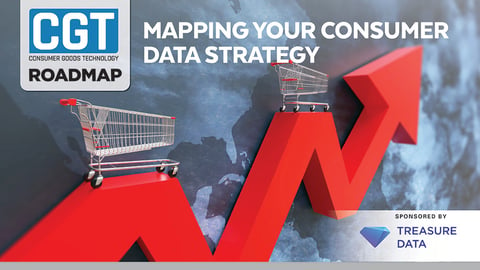Architecting a More Connected Consumer Data Strategy
Consumer data is one of the key currencies fueling growth today. In an evolving market, brands will increasingly be judged on how they strategize, approach, gather, interpret, and use this data to create a seamless consumer experience. As attitudes shift around privacy and transparency, companies will also be tasked to lead with trust and demonstrate their investment in technologies that both protect and consolidate consumer information. In doing so, they'll be better situated to implement the personalized experience consumers have come to expect.
In this exclusive Q&A, Danica Konetski, industry principal, consumer packaged goods,Treasure Data, outlines steps consumer goods companies can take to create a more connected data strategy and gain a more holistic view of what consumers want.
CGT: In what ways can a comprehensive consumer data strategy enable consumer goods companies to better map out or orchestrate a connected customer journey?
Danica Konetski: Ultimately, connected, seamless, and meaningful experiences are driven by data-informed decisions; decisions based on facts from a single source of truth. Therefore, it is important to centralize all important data (consumer, brand, sales and campaign data) to understand the stage of journey for each consumer, propensity to increase their lifetime value, and by how much, as well as the most meaningful actions to take to further engage and influence their behavior.
CGT: How are consumer attitudes toward data privacy shifting, and what can brands do to keep pace with these changes while remaining compliant with the latest regulations and policies?
Konetski: Overall, consumers increasingly assume you have a lot of their personal data. Further, they expect you to know them well enough to anticipate their needs and to proactively deliver meaningful products, programs, services, and recommendations directly.
We see a trend toward consumers’ willingness to proactively share their personal data, but only to the extent that the brand returns a commiserate amount of value in exchange.
If a brand overwhelms consumers with too-frequent outreach or with out-of-context messaging, they will disengage. Consumers may use ad and email blockers, and remove location services. They may even call out a brand on social media if they feel dissatisfied, or if they feel that their data isn’t being treated respectfully to create value.
CGT: What are some of the biggest challenges brands face when creating a connected consumer data strategy today?
Konetski: Consumer goods companies face challenges in creating a unified data foundation largely because, historically, they have had fewer direct commerce and marketing relationships with consumers. And, despite recent efforts to engage with direct marketing and sales, the vast majority of transactions remain indirect and fragmented.
There are other persistent historical consumer industry dynamics that are challenging efforts to connect data. Many of these companies manage large and complex portfolios, having grown through acquisition. Likewise, they tend to have decentralized, matrixed organization structures. Often, established companies have legacy data infrastructures, and legacy ways of working.
Beyond the unique challenges of consumer goods, companies of all types face numerous barriers to enhance data management. This includes data privacy concerns, cookie deprecation, competing data sets, and competing priorities. They are also pressured to leverage the most modern technology and the most advanced predictive analytics for more accurate measurement and prediction.
The most advanced companies are increasingly using connected consumer data to not only drive marketing and sales efforts but also to enhance customer service, improve revenue growth management and supply chain optimization, as well as use this data asset for discovery to identify new product and business opportunities.
CGT: What best practices should brands explore to elevate their consumer data strategy?
Konetski: There are some best practices in this area that are worth noting.
- Use a unified consumer data platform to manage all consumer data across all touchpoints at every point of interaction.
- Leverage predictive analytics and machine learning to test and learn for ongoing continuous improvement.
- Use segmentation to identify micro-audiences for very personalized interactions based on all consumer knowledge, including: demographics, behavior, campaign interaction, attitudes, sentiment, and other attributes that help to better understand and empathize with consumers.
- Enable measurable results that drive quick time to value and long-term marketing effectiveness and efficiency with more precise marketing.
- Ensure a data strategy where data is captured with every consumer interaction.
- Adopt emerging capabilities for managing zero party data, utilizing data clean rooms, and advancing predictive analytics and machine learning to optimize campaign performance.







